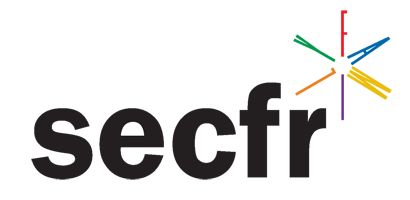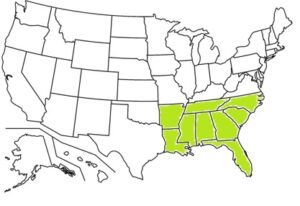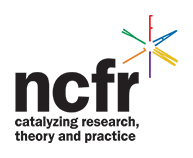Preparing Presentation PowerPoints
Paper and practice presentations last approximately 15 minutes, plus about 5 minutes for questions/discussion. Presentations usually occur in “breakout sessions”, where there are 3-4 presenters within a session.
Presenters will not be able to use their personal laptop for their presentation. A multimedia/LCD projector, and the laptop provided will have your presentation pre-loaded in your presentation room. A clicker will also be provided.
Presentations must be submitted by no later than April 11th, 2024.
Remember that you — not PowerPoint — are the presenter. Use your slides to emphasize a point, keep yourself on track, and illustrate a point with a graphic or photo.
Remember that you only have 15 minutes to present. Ideally, you should have no more than 10 total slides. You may bring handouts or supplemental materials for the audience.
Please send a copy of your presentation and biographical information (100 words or less introduction) to [email protected] by no later than 5:00 pm ET on April 11th, 2024.
Files should be PowerPoint or PDF files. Please do not share links as the downloading process may alter the content.
- Font sizes should be at least 24-point for the body, 28-point for headers, and 32-point for titles.
- Avoid all upper-case type
- Serif fonts (such as Times New Roman) are generally easier to read in the body of the text. Sans serif fonts (such as Arial or Calibri) are best used in titles, headings, and captions for emphasis.
- Use bold and bullets for emphasis.
- Use only two levels of bullet points.
- Keep it simple, clean, and concise. Use consistent wording.
- One topic per line works best, so use key words rather than complete sentences. A good rule to follow is: 5 lines per slide, 5 words per line, and no more than 5 text-heavy slides in a row. Emphasize key points.
- Double space between each line of text to allow for easier reading by all.
- Present numbers selectively. Do not overload the slide with numerical information. A chart or graph showing differences between conditions, ages, etc. is easier for the audience to process than a table full of numbers indicating the same differences.
- Keep graphs simple. The most effective graphs are pie charts with 3 or 4 slices and column charts with 3 or 4 columns. Ensure your tables, graphs, etc. are large enough so that people can see them from the back of the room. Be sure to describe all tables, graphs, etc. so that the visuals are more easily understood by all.
- Keep the background simple. Colors should be sharp and in strong contrast without being unsettling. Limit the number of colors used on one slide. Do not only use color to distinguish information. Varying font size is helpful too.
- If you use animations, set the speed of the animations to be slow so they can be described fully.
- Practice, practice, practice to your time limit. Sessions are on a tight schedule and there are others presenting in your session. You must adhere to the time limit.
Preparing a Poster
Authors are expected to be at the poster the entire session (either 45 or 60 minutes) to answer questions and distribute handouts.
- The poster should be created in landscape orientation.
- Posters are 48 x 60 inches (smaller posters are 36 x 48 inches).
- Dimensions, in PowerPoint, can be set under Design and Slide Size. Click on Custom Design Size to change your dimensions.
- Post a brief abstract (50 words) in the upper left-hand corner.
- Select only the most pertinent data to report on the poster.
- A traditional poster includes title, authors, author affiliations, email, an abstract, methods, results, conclusions, and implications. References and acknowledgements may also be included if there is space.
- Presenters may choose a new poster format which changes the arrangement of the poster contents (see youtube.com/watch?v=1RwJbhkCA58&t=2s).
- Keep the title as short as possible so others can read it quickly.
- Use upper- and lower-case type throughout the poster. Avoid all upper-case type.
- Serif fonts (such as Times New Roman) are generally easier to read in the body of the text. Sans serif fonts (such as Arial or Calibri) are best used in titles, headings, and captions for emphasis.
- Use bold and bullets for emphasis.
- Font size: ≥ 24-point font. For example, 24-point for the body, 36-point for sub-headers, 48-point for headers, and 85-point for main titles.
More complex data and information can be presented in a handout. Presenters may choose to print on traditional poster paper or choose to print a fabric poster.
- The poster material can be mounted with pushpins, staples, or Velcro (presenters must bring their own materials to mount the poster).
- Poster presenters are expected to stay the entire time of the session to give attendees a chance to talk with you about your work.
Preparing a Roundtable
The roundtable session will span one hour and each session will have a 20 minute window for conversation in order to allow for participants to enjoy multiple roundtables during the hour window.
Roundtables are an interactive opportunity to demonstrate an educational, administrative, enrichment, or pedagogical (e.g., specific curricula or teaching technique) resource that has been particularly useful when working with students, families, professionals, or other populations. As such, no audio-visual equipment is provided and should not be used during the session. It is expected that presenters provide any tangible resources to participants.



